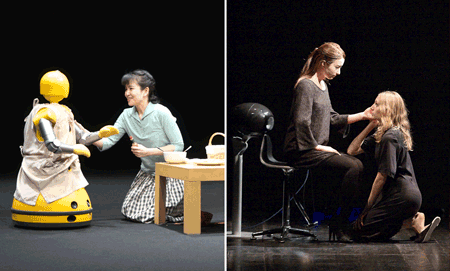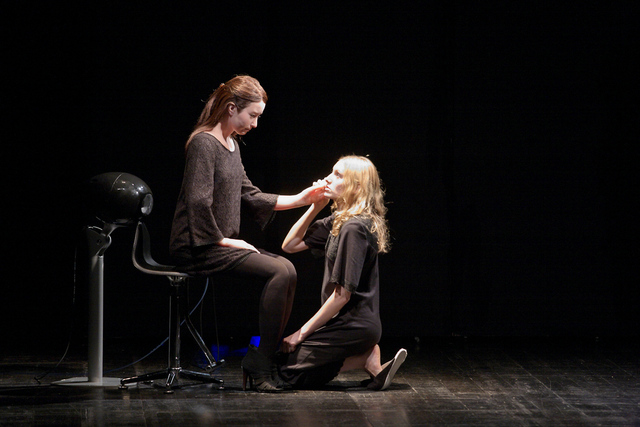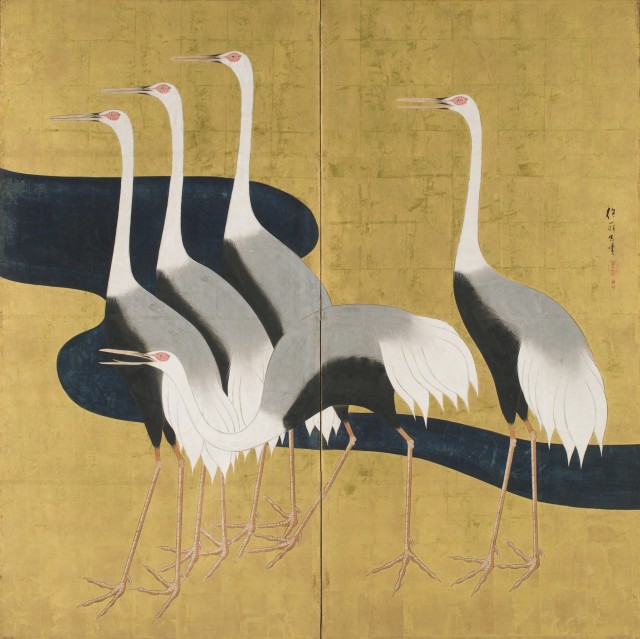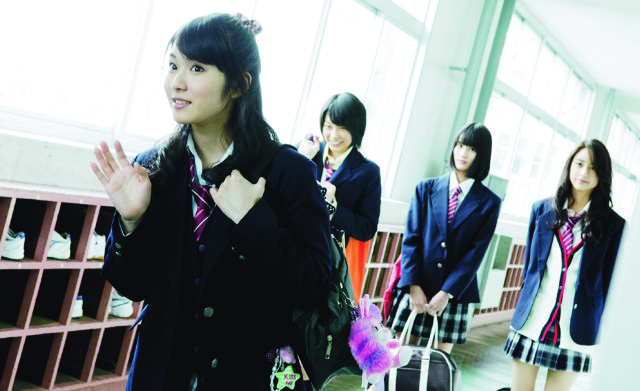
Life is turned upside down and inside out when a high school hero suddenly and unexpectedly disappears in THE KIRISHIMA THING
THE KIRISHIMA THING (Daihachi Yoshida, 2012)
Japan Society
333 East 47th St. at First Ave.
Sunday, July 14, 7:30
Japan Cuts series continues through July 28
212-715-1258
www.subwaycinema.com
www.japansociety.org
 Life goes completely out of whack when a massively popular student suddenly and mysteriously disappears in Daihachi Yoshida’s splendid examination of the trials and travails of high school, The Kirishima Thing. With no advance warning, superstar athlete and dreamy stud Kirishima can’t be found, missing class and volleyball practice, thoroughly confusing his friends and teammates. His girlfriend, the beautiful Risa (Mizuki Yamamoto), doesn’t know where he is. Risa’s clique of cool girls, including Sana (Mayu Matsuoka), Mika (Kurumi Shimizu), and Kasumi (Ai Hashimoto), start growing apart. The not extremely talented Koizumi (Taiga) is forced to replace Kirishima on the volleyball team. Aya (Suzuka Ohgo) plays sax on a rooftop while actually spying on her secret crush, the handsome Hiroki (Masahiro Higashide), who is Sana’s girlfriend and Kirishima’s best friend. Another of Kirishima’s friends, Ryuta (Motoki Ochiai), shows up to school with ridiculously curly hair. And Kasumi begins spending more time with nerd-geek Ryoya (Ryunosuke Kamiki), who decides to defy his film teacher by going ahead and making the zombie flick Student Council of the Living Dead. Tensions heat up, fears rise to the surface, and standard hierarchical relationships go significantly off kilter as Kirishima’s unexplained absence affects everyone’s position in high school society and makes them reexamine the purpose of their young lives. Based on the omnibus novel Kirishima, Bukatsu Yamerutteyo (“Did You Hear Kirishima Quit?”) by Ryo Asai, The Kirishima Thing cleverly deals with genre clichés as Yoshida (Permanent Nobara, The Wonderful World of Captain Kuhio) and cowriter Kohei Kiyasu tackle the myriad issues that face teenagers on a daily basis, evoking both Beckett and Kurosawa through a John Hughes-like lens with scenes that are retold from multiple viewpoints but don’t provide any firm answers. Winner of Best Picture, Best Director, Most Popular Film, and Outstanding Achievement in Editing at the 2013 Japan Academy Prize awards show, The Kirishima Thing is screening July 14 at 7:30 at Japan Society as part of the Japan Cuts series, a copresentation with the New York Asian Film Festival.
Life goes completely out of whack when a massively popular student suddenly and mysteriously disappears in Daihachi Yoshida’s splendid examination of the trials and travails of high school, The Kirishima Thing. With no advance warning, superstar athlete and dreamy stud Kirishima can’t be found, missing class and volleyball practice, thoroughly confusing his friends and teammates. His girlfriend, the beautiful Risa (Mizuki Yamamoto), doesn’t know where he is. Risa’s clique of cool girls, including Sana (Mayu Matsuoka), Mika (Kurumi Shimizu), and Kasumi (Ai Hashimoto), start growing apart. The not extremely talented Koizumi (Taiga) is forced to replace Kirishima on the volleyball team. Aya (Suzuka Ohgo) plays sax on a rooftop while actually spying on her secret crush, the handsome Hiroki (Masahiro Higashide), who is Sana’s girlfriend and Kirishima’s best friend. Another of Kirishima’s friends, Ryuta (Motoki Ochiai), shows up to school with ridiculously curly hair. And Kasumi begins spending more time with nerd-geek Ryoya (Ryunosuke Kamiki), who decides to defy his film teacher by going ahead and making the zombie flick Student Council of the Living Dead. Tensions heat up, fears rise to the surface, and standard hierarchical relationships go significantly off kilter as Kirishima’s unexplained absence affects everyone’s position in high school society and makes them reexamine the purpose of their young lives. Based on the omnibus novel Kirishima, Bukatsu Yamerutteyo (“Did You Hear Kirishima Quit?”) by Ryo Asai, The Kirishima Thing cleverly deals with genre clichés as Yoshida (Permanent Nobara, The Wonderful World of Captain Kuhio) and cowriter Kohei Kiyasu tackle the myriad issues that face teenagers on a daily basis, evoking both Beckett and Kurosawa through a John Hughes-like lens with scenes that are retold from multiple viewpoints but don’t provide any firm answers. Winner of Best Picture, Best Director, Most Popular Film, and Outstanding Achievement in Editing at the 2013 Japan Academy Prize awards show, The Kirishima Thing is screening July 14 at 7:30 at Japan Society as part of the Japan Cuts series, a copresentation with the New York Asian Film Festival.
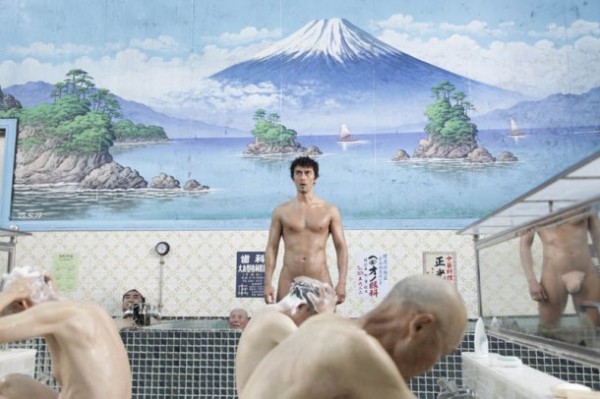
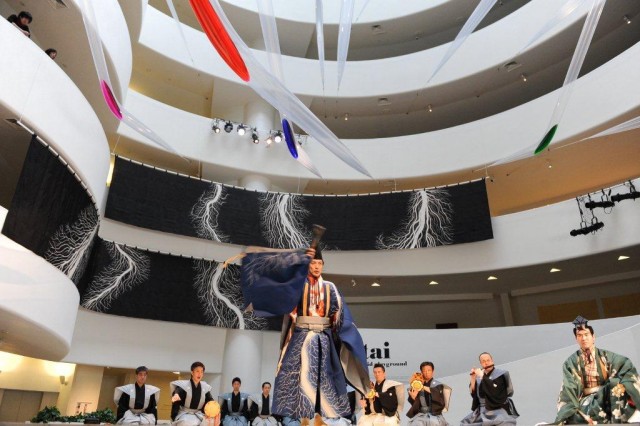
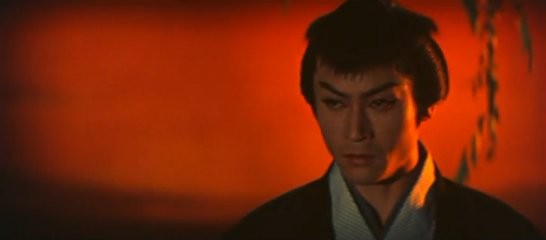
 Last year, Japan Society’s Globus Film Series, “Love Will Tear Us Apart,” featured contemporary films from Japan and Korea that explored love, sex, fetishism, and violence in unusual ways. This year Globus focuses its attention on the Japanese film studio Shintoho, which broke off from the famous Toho Company during a strike and went on to make more than five hundred movies during the 1950s and 1960s, many becoming low-budget cult classics. Curated by Mark Schilling, “Into the Shintoho Mind War: Girls, Guns & Ghosts from the Second Golden Age of Japanese Film” kicks off February 27 with Nobuo Nakagawa’s Ghost Story of Yotsuya (Tokaido Yotsuya Kaidan), an oft-told Macbeth-like tale based on an 1825 kabuki play written by Tsuruya Nanboku IV. Filled with ambition and no moral code, penniless samurai Iemon Tamiya (Shigeru Amachi) and his servant, Naosuke (Shuntarô Emi), decide to murder their way up the ladder to success. First they meet the innocent sisters Iwa (Katsuko Wakasugi) and Sode (Noriko Kitazawa), but they have to get rid of Iwa’s fiancée, Yomoshichi (Ryûzaburô Nakamura), if Iemon is to marry her and then Naosuke is to take Sode. Once Iemon and Iwa wed and have a child, he starts eyeing Ume Itô (Junko Ikeuchi), whose wealthy father could lift his still-low standing, but that means Iemon would have to dispose of Iwa and her loyal friend, Takuetsu (Jun Ôtomo). However, as Iemon soon finds out, death does not necessarily deny vengeance. Shot in lurid reds and greens by Tadashi Nishimoto, Ghost Story of Yotsuya takes quite a while to get going, spending far too much time establishing Iemon and Naosuke as evil characters with no conscience, but once it delves into the horror realm, it becomes wickedly good fun, including fantastic makeup and genuine chills, along with plenty of strangeness. Much of the film doesn’t make sense, and some of it is downright monotonous, but the ending is quite a memorable one. The screening at Japan Society will be followed by the Enka Ecstasy party, with attendees encouraged to wear black-and-white clothing with two color accessories (we suggest red and green, of course); Neo Blues Maki will perform. The series, with all films being New York premieres, continues through March 10 with Teruo Ishii’s Flesh Pier and Yellow Line, Yoshiro Ishikawa’s Ghost Cat of Otama Pond, Michiyoshi Doi’s The Horizon Glitters, Toshio Shimura’s Revenge of the Pearl Queen, Kyotaro Namiki’s Vampire Bride, and Nakagawa’s Death Row Woman.
Last year, Japan Society’s Globus Film Series, “Love Will Tear Us Apart,” featured contemporary films from Japan and Korea that explored love, sex, fetishism, and violence in unusual ways. This year Globus focuses its attention on the Japanese film studio Shintoho, which broke off from the famous Toho Company during a strike and went on to make more than five hundred movies during the 1950s and 1960s, many becoming low-budget cult classics. Curated by Mark Schilling, “Into the Shintoho Mind War: Girls, Guns & Ghosts from the Second Golden Age of Japanese Film” kicks off February 27 with Nobuo Nakagawa’s Ghost Story of Yotsuya (Tokaido Yotsuya Kaidan), an oft-told Macbeth-like tale based on an 1825 kabuki play written by Tsuruya Nanboku IV. Filled with ambition and no moral code, penniless samurai Iemon Tamiya (Shigeru Amachi) and his servant, Naosuke (Shuntarô Emi), decide to murder their way up the ladder to success. First they meet the innocent sisters Iwa (Katsuko Wakasugi) and Sode (Noriko Kitazawa), but they have to get rid of Iwa’s fiancée, Yomoshichi (Ryûzaburô Nakamura), if Iemon is to marry her and then Naosuke is to take Sode. Once Iemon and Iwa wed and have a child, he starts eyeing Ume Itô (Junko Ikeuchi), whose wealthy father could lift his still-low standing, but that means Iemon would have to dispose of Iwa and her loyal friend, Takuetsu (Jun Ôtomo). However, as Iemon soon finds out, death does not necessarily deny vengeance. Shot in lurid reds and greens by Tadashi Nishimoto, Ghost Story of Yotsuya takes quite a while to get going, spending far too much time establishing Iemon and Naosuke as evil characters with no conscience, but once it delves into the horror realm, it becomes wickedly good fun, including fantastic makeup and genuine chills, along with plenty of strangeness. Much of the film doesn’t make sense, and some of it is downright monotonous, but the ending is quite a memorable one. The screening at Japan Society will be followed by the Enka Ecstasy party, with attendees encouraged to wear black-and-white clothing with two color accessories (we suggest red and green, of course); Neo Blues Maki will perform. The series, with all films being New York premieres, continues through March 10 with Teruo Ishii’s Flesh Pier and Yellow Line, Yoshiro Ishikawa’s Ghost Cat of Otama Pond, Michiyoshi Doi’s The Horizon Glitters, Toshio Shimura’s Revenge of the Pearl Queen, Kyotaro Namiki’s Vampire Bride, and Nakagawa’s Death Row Woman.